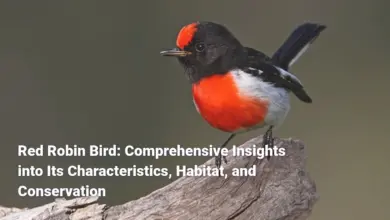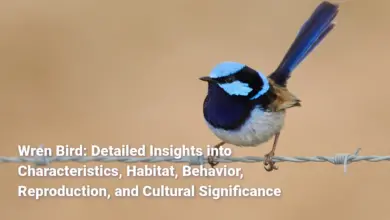Sparrow Hawks: Distinctive Traits, Hunting Mastery, and Their Role in Culture
A Deep Dive into the Physical Traits, Hunting Strategies, and Cultural Impact of Sparrow Hawks
Sparrow hawks, particularly the Eurasian Sparrowhawk (Accipiter nisus), are captivating birds of prey renowned for their agile hunting skills and striking appearances. These hawks have evolved with a suite of remarkable adaptations that allow them to thrive in various environments, from dense woodlands to urban gardens. Their nimble flight, combined with keen eyesight, makes them proficient hunters of small birds, often utilizing stealth and speed to capture their prey. In this article, we will explore various aspects of the sparrow hawk, including its characteristics, behaviors, diet, threats, and even its symbolism in culture and folklore. Whether you are an avid birdwatcher or simply curious about these fascinating creatures, understanding the sparrow hawk provides insights into the delicate balance of nature and the intricate roles that these birds play within their ecosystems.
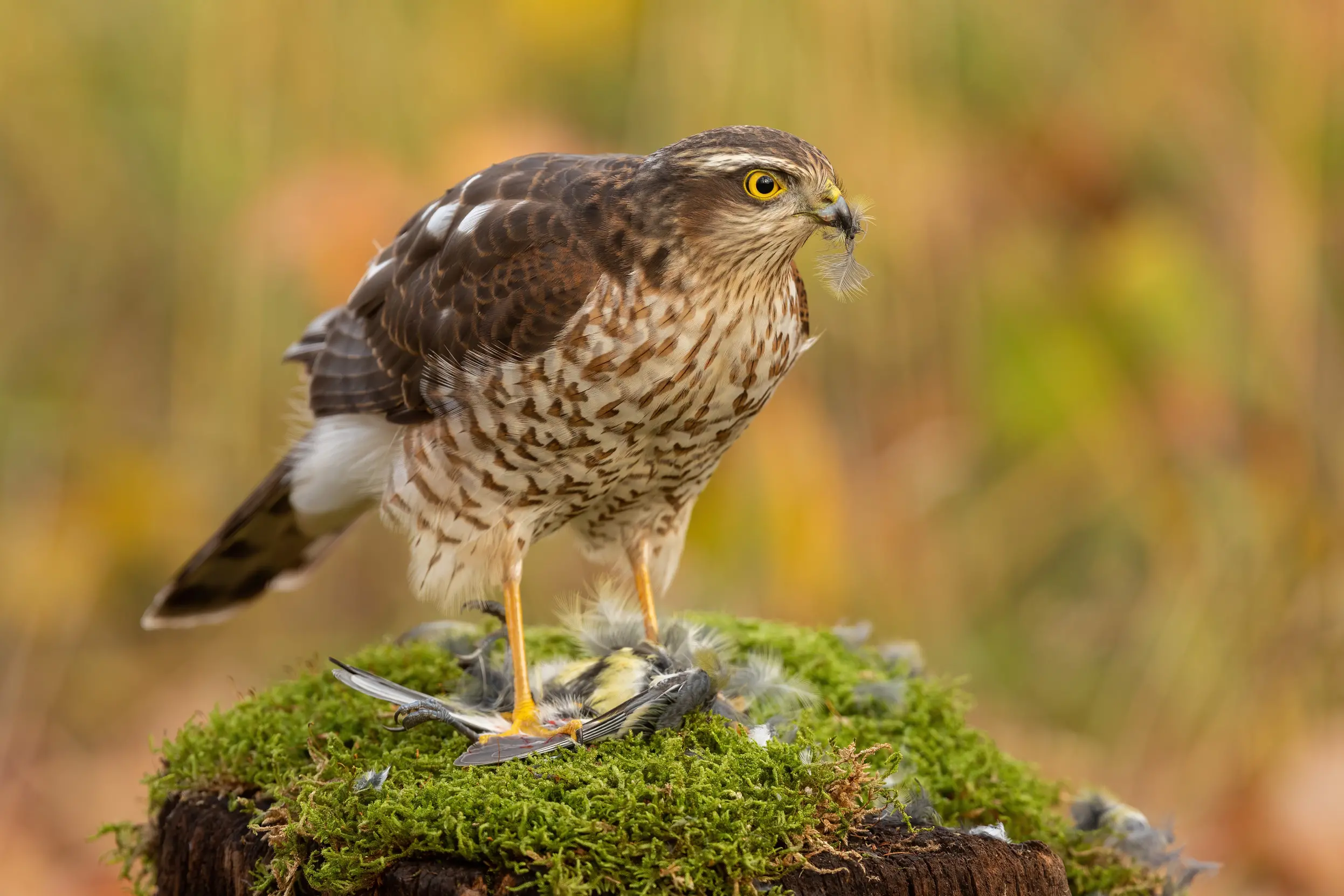
Characteristics of Sparrow Hawks
Sparrow hawks possess a unique blend of physical and behavioral traits that contribute to their success as predators. One of the most significant aspects of their characteristics is sexual dimorphism, where females are notably larger than males. This size difference not only aids in reducing competition for food but also allows each gender to specialize in hunting different prey sizes. Imagine them as a dynamic duo in a game of predator and prey, where the larger female often targets heavier birds while the more agile male pursues smaller songbirds.
In terms of physical features, sparrowhawks are characterized by their sharp, hooked beak and large, forward-facing eyes that grant them excellent depth perception. Their plumage varies between the sexes; males sport bluish-gray feathers, while females showcase a richer brown coloration, enabling efficient camouflage within their habitats. Furthermore, their wings are relatively short and rounded, optimized for quick, nimble maneuvers rather than long, soaring flights.
Summary Comparison of Physical Characteristics
| Characteristic | Males | Females |
|---|---|---|
| Length | 29–34 cm (11–13 in) | 34–38 cm (13–15 in) |
| Weight | 126-222 grams (4.4-7.9 oz) | 226-428 grams (8.0-15 oz) |
| Wingspan | 55–61 cm (21.7–24 in) | 55–61 cm (21.7–24 in) |
| Plumage | Bluish-gray with orange bars | Brown with streaks |
The striking appearances of sparrowhawks are complemented by their unique adaptations, which enhance their hunting abilities across various ecosystems. As solitary, territorial birds, they showcase both resilience and prowess in their respective environments, further solidifying their position as efficient predators.
Physical Appearance
The physical traits of the sparrow hawk reveal a fascinating blend of functionality and beauty. As mentioned earlier, females outweigh their male counterparts significantly, making the dimorphism quite evident. This diversity in size and strength allows them to exploit different ecological niches and reduces competition between sexes. Picture a powerful female soaring through the air, a beautiful silhouette against the sky, ready to tackle larger prey, while the male, lighter and more agile, darts through foliage, a speck of color in the greens and browns of the underbrush.
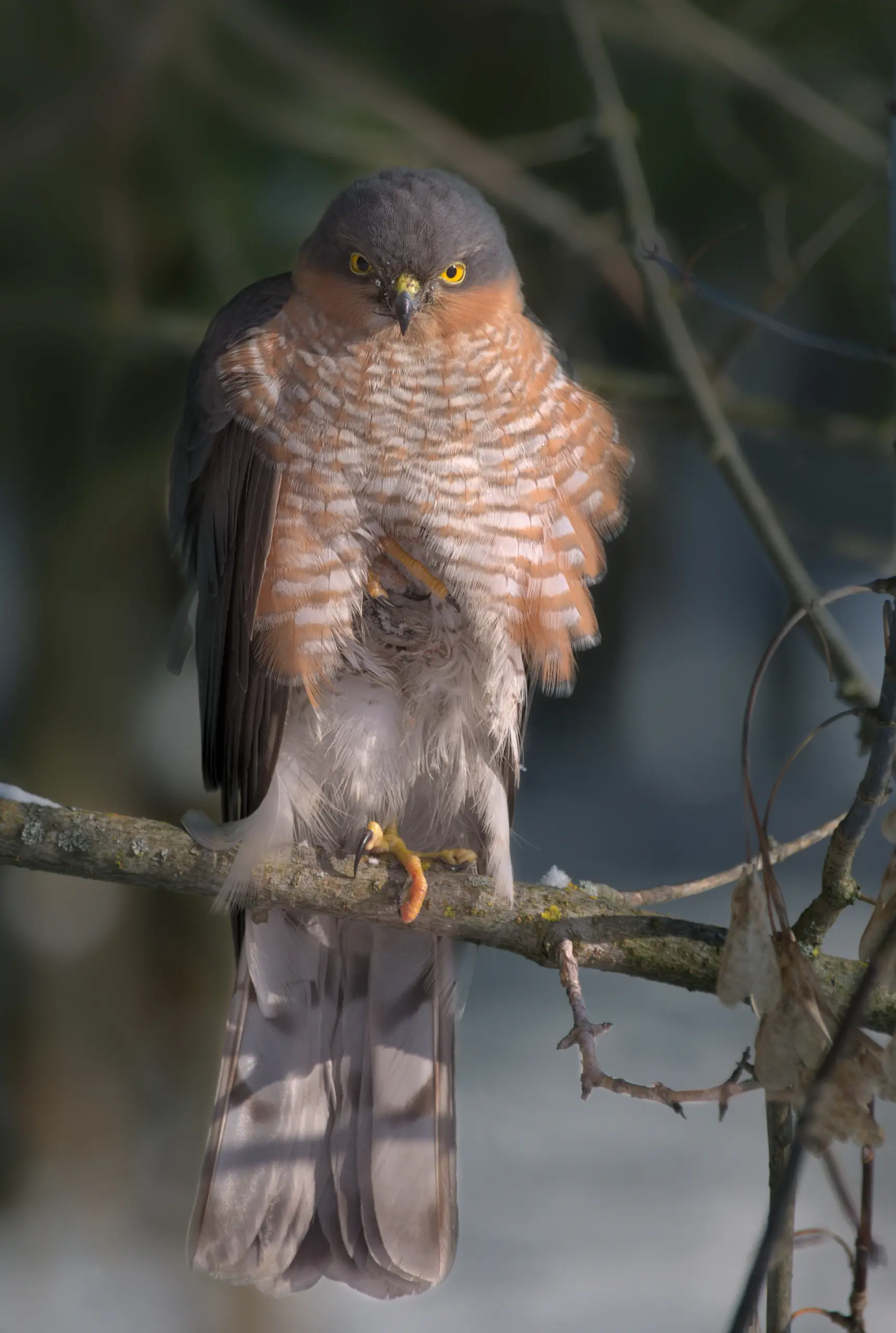
The coloration of the sparrow hawk serves a pivotal role in their hunting success. The males’ bluish-gray plumage and the contrasting orange-barred underparts are designed to provide camouflage against tree canopies, while the female’s mottled brown feathers help them blend seamlessly with their surroundings. This natural artistry is nature’s way of ensuring that they can sneak up on unsuspecting prey, much like a masterful painter blending colors on a canvas.
Interestingly, the tail configuration of the sparrow hawk is another remarkable feature. The long and squared nature of their tail aids in stabilization during flight, providing them with the agility needed to perform sharp turns and sudden dives while pursuing prey. The scansorial prowess of a sparrow hawk is akin to that of a skilled acrobat, gracefully maneuvering through the air.
In terms of their sensory capabilities, the large yellow eyes of sparrow hawks are crucial for hunting. Not only do they provide a wider range of vision, but they also enhance their ability to spot movement, facilitating successful captures. Their sharp, hooked beaks are adept at tearing flesh, granting them the ability to consume a diverse diet of small birds. Overall, the physical attributes of sparrow hawks are carefully honed by evolution, endowing them with the features necessary for their roles as apex predators in their habitats.
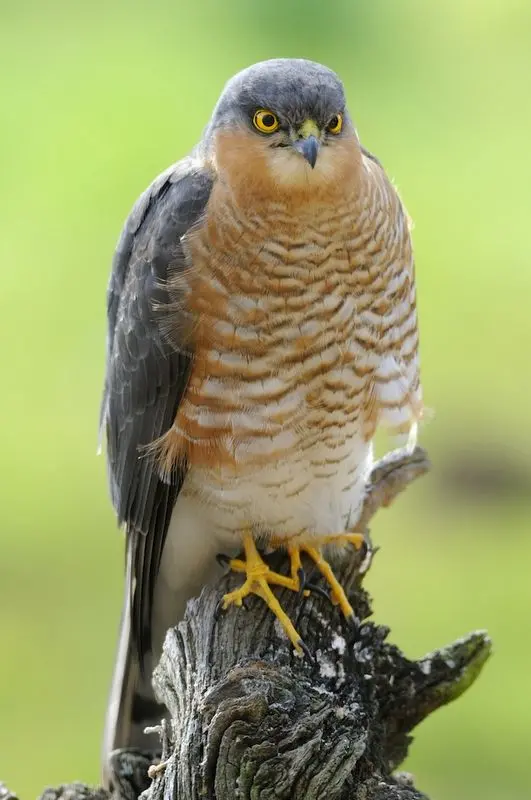
Behavior and Habitat
The behavioral patterns of sparrowhawks are as fascinating as their physical characteristics. Primarily solitary creatures, they exhibit strong territorial instincts, especially during the mating season. When defending their territory, male sparrowhawks can showcase aggressive displays, darting through their space to warn off intruders. This territoriality reflects the innate survival instinct prevalent among many apex predators, demonstrating their commitment to maintaining a consistent food source for themselves and their offspring.
Sparrowhawks thrive in various habitats; they are incredibly adaptable birds. While they prefer temperate forests for nesting, urban landscapes have become increasingly accommodating for these raptors. Parks and residential gardens provide the necessary cover and abundant food sources, showcasing the birds’ remarkable ability to adapt to anthropogenic changes. Urban environments often mirror miniature ecosystems, where sparrowhawks can effectively hunt species like house sparrows and pigeons.
During the breeding season, sparrowhawks construct their nests in mature trees. These nests are often tucked away mid-tree, providing insulation against potential threats. The choice of nesting location underscores the importance of safety in their reproductive strategies, ensuring that their young are well-protected while growing and learning to fend for themselves.
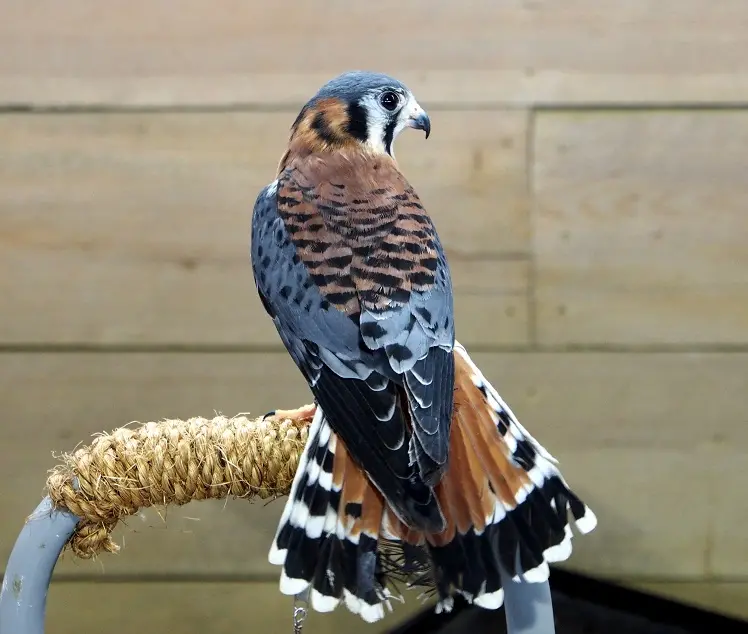
The hunting behaviors of sparrowhawks are characterized by rapid, acrobatic flight. They are known for their ability to navigate through dense foliage with fluid grace, resembling a skilled dancer moving through an intricate routine. While hunting, they typically launch surprise attacks by perching quietly and observing their surroundings before venturing forth with swift speed. This combination of agility, stealth, and precision positions them as exceptional hunters in both wild and urban environments.
In summary, the unique behaviors and habitat choices of sparrowhawks reveal their adaptability and strategic prowess. As they navigate through diverse settings, their solitary yet territorial nature contributes to their survival, echoing the essence of resilience found within the animal kingdom.
Diet and Hunting Techniques
Sparrowhawks exhibit distinctive hunting techniques primarily focused on avian prey. They are specialized predators that mainly consume small birds, and their diet is surprisingly varied, with research indicating they prey on around 120 different species, including common sparrows, finches, and starlings. The females, due to their larger size, can go after bigger birds like wood pigeons and magpies, allowing them to have dietary flexibility and minimize competition between genders.
During the summer months, sparrowhawks often target fledgling birds, capitalizing on their abundance at this time. Studies have shown that nearly 40% of their summer catches consist of these young birds, representing an adaptation strategy to maximize their foraging success. Alongside their primary focus on birds, sparrowhawks may occasionally supplement their diet with smaller mammals and insects when avian populations are low. This dietary adaptability allows them to maintain their energy needs regardless of environmental fluctuations.
Hunting strategies of sparrowhawks are fascinating and highly efficient. They employ a combination of stealth, speed, and agility. One common technique involves perching quietly, often concealed in dense vegetation until a potential prey is spotted. Once identified, these hawks make an astonishingly quick dive, reaching speeds of up to 50 miles per hour, similar to an arrow released from a bow.

Additionally, sparrowhawks are known for their ability to perform sharp turns and low-altitude flights when navigating through foliage, showcasing their acrobatic prowess. This remarkable agility is paramount when pursuing small, fast-moving birds that can quickly evade attacks. The hunting success rate for sparrowhawks hovers around 10%, which underscores the intense competition and constant evolution of strategies among these predators.
Overall, the diet and hunting techniques of sparrowhawks encapsulate their role as skilled ambush hunters, allowing them to thrive in diverse habitats by exploiting available food sources expertly.
Preferred Prey
The preferred prey of sparrowhawks primarily revolves around small to medium-sized birds, which comprise the majority of their diet. Their hunting habits exhibit a notable seasonal variation, particularly evident during the summer months when fledgling birds become readily available. These young birds provide an additional energy source during breeding season and showcase the sparrowhawk’s adaptability in hunting strategies.
Among their notable prey species are:
- House Sparrows
- Finches (various species)
- Starlings
- Buntings
- Thrushes
As opportunistic feeders, sparrowhawks have been observed preying on more than 120 different species, emphasizing their flexibility in feeding behavior. This adaptability allows them to utilize various habitats, from dense woodland areas to urban gardens, where food sources are varied due to human activity.
Interestingly, the different hunting approaches of male and female sparrowhawks reflect their size and capability differences. Males tend to target smaller birds more frequently, facilitating effective competition for resources. Conversely, females, being larger and stronger, often hunt larger birds, including pigeons, enhancing their dietary breadth.
Occasionally, sparrowhawks may also consume small mammals and insects, especially when avian populations are low. This diverse diet demonstrates their role as predators in the ecosystem, maintaining a healthy balance among various bird populations while efficiently utilizing available food resources.
Hunting Strategies
The hunting strategies employed by sparrowhawks showcase their incredible agility and speed. With adaptations finely tuned for ambush hunting, these birds have learned to master several techniques that significantly increase their chances of catch.
- Surprise Attacks: Sparrowhawks typically begin their hunting process by quietly perching in a concealed spot, such as dense foliage or trees. This stealthy waiting period allows them to observe potential prey while minimizing the chance of being detected themselves. This element of surprise plays a pivotal role in their hunting success.
- Acrobatic Flight: Once a target is spotted, sparrowhawks launch themselves into a rapid flight, performing sharp turns and quick descents while navigating through tree branches. Their elongated tails act as rudders, enabling fine maneuverability and balance during aerial pursuits.
- Short Bursts of Speed: The need for speed is critical in the sparrowhawk’s hunting approach, as small songbirds have quick reflexes and can change direction with little warning. Their ability to accelerate rapidly and dive from heights aids in closing the gap on evasive prey, maximizing the element of surprise.
- Territorial Hunting: Remaining solitary by nature, sparrowhawks establish and defend hunting territories. By maintaining a consistent area for hunting, they ensure a reliable food source and reduce competition with other raptors. Their adaptability allows them to adjust hunting strategies based on the size and type of prey available in their territories.
In conclusion, the strategies employed by sparrowhawks effectively illustrate their meticulous and specialized hunting methods. Their combination of stealth, agility, and knowledge of their local environments allows them to thrive within an ever-changing ecosystem.
Conservation Status
The conservation status of the sparrowhawk, specifically the Eurasian sparrowhawk (Accipiter nisus), is classified as “Least Concern” by the International Union for Conservation of Nature (IUCN). This classification stems from the relative stability of their population, estimated at approximately 35,000 breeding pairs across Europe and Asia. This figure reflects their successful adaptation to a variety of environments, including urban areas, where they can find ample food sources.
Despite their stable conservation status, certain threats can impact local or specific populations of sparrowhawks. Habitat loss poses one significant risk due to deforestation and expanding urbanization, which can lead to a reduction in suitable nesting and hunting areas. As these birds heavily depend on well-structured woodlands for survival, any degradation of these habitats presents a critical challenge to their continued presence.
Another notable threat includes poisoning sparrowhawks may either directly ingest toxic substances or indirectly consume prey that has been exposed to poisons. Agricultural practices that utilize pesticides can also diminish their food sources, ultimately affecting individual bird health and population numbers.
Human encroachment might lead to disturbances in nesting areas, yet sparrowhawks have shown resilience by adapting to urban environments. Despite facing challenges, these factors highlight the importance of ongoing monitoring and conservation efforts to ensure that sparrowhawks continue to thrive in their natural habitats.
Summary of Conservative Status
| Conservation Status | Estimated Population | Major Threats |
|---|---|---|
| Least Concern | ~35,000 breeding pairs | Habitat loss, poisoning, human disturbances |
Overall, while the sparrowhawk remains classified as a species of “Least Concern,” their population stability should encourage proactive conservation measures that address ongoing threats and aid in maintaining thriving populations.
Threats to Sparrow Hawks
Despite their classification as “Least Concern,” sparrowhawks face various threats that can impact local populations and their survival as a species. Understanding these threats is crucial for implementing effective conservation strategies.
- Habitat Loss: One of the most pressing threats to sparrowhawks is the loss of their natural habitats due to deforestation, urbanization, and agricultural development. The decline of mature woodlands and dense vegetation has led to reduced nesting and hunting opportunities, exacerbating the pressures these birds face.
- Poisoning: Poisoning either through direct ingestion of toxins or by consuming prey exposed to poisons presents a significant risk to sparrow hawks. The widespread use of pesticides in agriculture has detrimental effects on local bird populations, including sparrowhawks, as they may consume contaminated prey or directly ingest harmful substances.
- Human Disturbances: Increasing human presence, particularly in urban areas, can disrupt breeding and nesting success of sparrowhawks. Noise pollution, activity within their territories, and habitat modification can interfere with their natural behaviors, potentially leading to lower reproductive success.
- Climate Change: Changing climate conditions may also impact prey availability and breeding habitats. As ecosystems evolve in response to climate shifts, the distribution of sparrowhawk prey may be affected, prompting these birds to adapt their diets or relocate to seek food sources.
- Related Mortality Factors: In addition to these major threats, sparrowhawks can fall victim to collisions with vehicles, windows, and other man-made structures, underscoring the impact of urbanization on their survival.
In summary, while sparrowhawks are currently classified as “Least Concern” due to their stable population, it is vital to recognize and address the various threats they encounter. Efforts to mitigate habitat loss, regulate pesticide usage, and protect their nesting sites are essential steps toward ensuring a healthy future for these remarkable birds of prey.
Conservation Efforts
Conservation efforts for sparrowhawks aim to address the various threats faced by the species, ensuring their continued survival in the face of environmental change. Various initiatives have been set in motion to protect their habitats and promote biodiversity.
- Habitat Conservation: Organizations and governments are increasingly recognizing the importance of protecting woodland areas and ensuring the preservation of habitats conducive to sparrowhawk nesting and hunting. Initiatives include reforestation efforts and the establishment of protected areas where sparrowhawk populations can thrive.
- Public Awareness Campaigns: Educating the public about the significance of sparrowhawks and their ecological roles is fundamental to conservation strategies. Awareness campaigns encourage responsible wildlife interactions and foster an appreciation for these birds, promoting community involvement in local conservation efforts.
- Regulatory Measures: Implementing regulations surrounding pesticide use can mitigate direct and indirect poisoning threats faced by sparrowhawks. Establishing guidelines for integrated pest management and promoting organic farming practices can help protect local avian populations.
- Monitoring Programs: Overall, monitoring programs play a crucial role in preserving sparrowhawk populations. These programs can help track their presence and assess population trends while identifying areas requiring urgent conservation actions. Citizen science initiatives can empower local communities to participate in these monitoring efforts.
- Collaborative Research: Scientists and conservationists are working collaboratively to conduct research that informs conservation strategies. Studying aspects of sparrowhawk behavior, habitat preferences, and population dynamics allows for targeted efforts aimed at preserving their ecological niches effectively.
Through proactively addressing threats and implementing conservation initiatives, efforts are underway to ensure the continued presence of sparrowhawks in their natural habitats. Collectively, these strategies can create sustainable ecosystems that benefit sparrowhawks and other wildlife sharing similar environments.
Differences Between Sparrow Hawks and Other Hawks
Sparrowhawks, particularly the Eurasian sparrowhawk (Accipiter nisus), exhibit unique characteristics that differentiate them from other hawk species. Understanding these distinctions is crucial for bird watchers and enthusiasts alike, aiding in accurate identification in the field.
- Size and Appearance: Compared to many other hawks, sparrowhawks are generally smaller. Adult males measure around 29–34 cm (11–13 inches) in length, while females are slightly larger at 34–38 cm (13–15 inches). In contrast, larger hawks like the red-tailed hawk can measure up to 66 cm (26 inches).
- Hunting Behavior: Sparrowhawks are distinct from larger hawks in their hunting techniques. They primarily focus on small birds, often utilizing ambush strategies that involve quick glides and surprise attacks through dense cover. Larger species, such as the red-tailed hawk, hunt a broader range of prey, including mammals and larger birds.
- Nesting Habits: Sparrowhawks often choose to nest in dense vegetation or trees, whereas other hawk species may construct nests in more open areas. This nesting preference reflects their need for concealment and safety while raising their young.
- Social Behavior: While many larger hawks are more solitary, or at least less social during breeding, sparrowhawks sometimes exhibit more communal behaviors, particularly during migration or in the nesting season when they may be seen in pairs.
In essence, the differences between sparrow hawks and other hawk species underscore their unique adaptations, highlighting their specialized roles within ecosystems.
Sparrow Hawks vs. Cooper’s Hawk
When comparing sparrow hawks to Cooper’s hawks (Accipiter cooperii), several observable differences emerge, primarily based on size, physical features, and behaviors.
- Size and Weight:
- Cooper’s Hawk: This species is significantly larger, often measuring between 15.5 to 17.5 inches in length with a wingspan of 28 to 34 inches.
- Sparrow Hawk (Sharp-shinned Hawk): Typically smaller, with lengths of 9.4 to 13.4 inches, and wingspans ranging up to 22.1 inches.
- Physical Features:
- Cooper’s Hawk: Characterized by its larger, rounded head giving it a blocky appearance alongside a long tail with a rounded tip, making it sturdier.
- Sparrow Hawk: Exhibiting a smaller, more rounded head, and a narrower body provides it with a more aerodynamic advantage during quick chases.
- Coloration:
- While both species feature blue-gray upper parts and orange barring underneath, the adult Cooper’s hawk has a more pronounced red eye compared to the sharp-shinned hawk’s orange eye.
- Behavior and Habitats:
- Cooper’s Hawk: Often found in both rural and urban areas, where they are known to hunt birds at feeders.
- Sparrow Hawk: Tends to prefer denser forests and is more adept at flying low through thick vegetation, highlighting their specialized hunting techniques.
Overall, the characteristics that set the sparrow hawk apart from the Cooper’s hawk illustrate a fascinating adaptive evolution in response to their respective ecological demands.
Sparrow Hawks vs. Sharp-Shinned Hawk
When distinguishing between sparrow hawks and sharp-shinned hawks (Accipiter striatus), it’s essential to recognize that the former is often colloquially identified as the sharp-shinned hawk in North America, leading to some confusion. Despite this, notable differences exist:
- Size:
- The sharp-shinned hawk is generally known for its smaller size, making it one of the smallest hawk species in North America.
- Distinguishing Characteristics:
- Sharp-shinned Hawk: Recognized for its slim figure and quick, erratic flight patterns. Its square-tipped tail is another distinguishing feature when observed from below.
- Sparrow Hawk: Shares this name in colloquial terms but primarily encompasses the European species, which can exhibit differences in plumage and size compared to the North American sharp-shinned.
- Habitat Preference:
- Both species thrive in similar habitats, with sharp-shinned hawks often preferring coniferous forests while the larger Cooper’s Hawk can inhabit more diverse environments.
Overall, understanding the differences between the two species can enhance birdwatching experiences, encouraging accurate identifications and a deeper appreciation for hawks in the ecosystem.
Sparrow Hawks in Culture and Folklore
The sparrow hawk holds significant cultural symbolism and has been featured extensively in folklore across various societies. These majestic birds are often associated with themes of protection, determination, and keen insight, showcasing their presence in human narratives and spiritual belief systems.
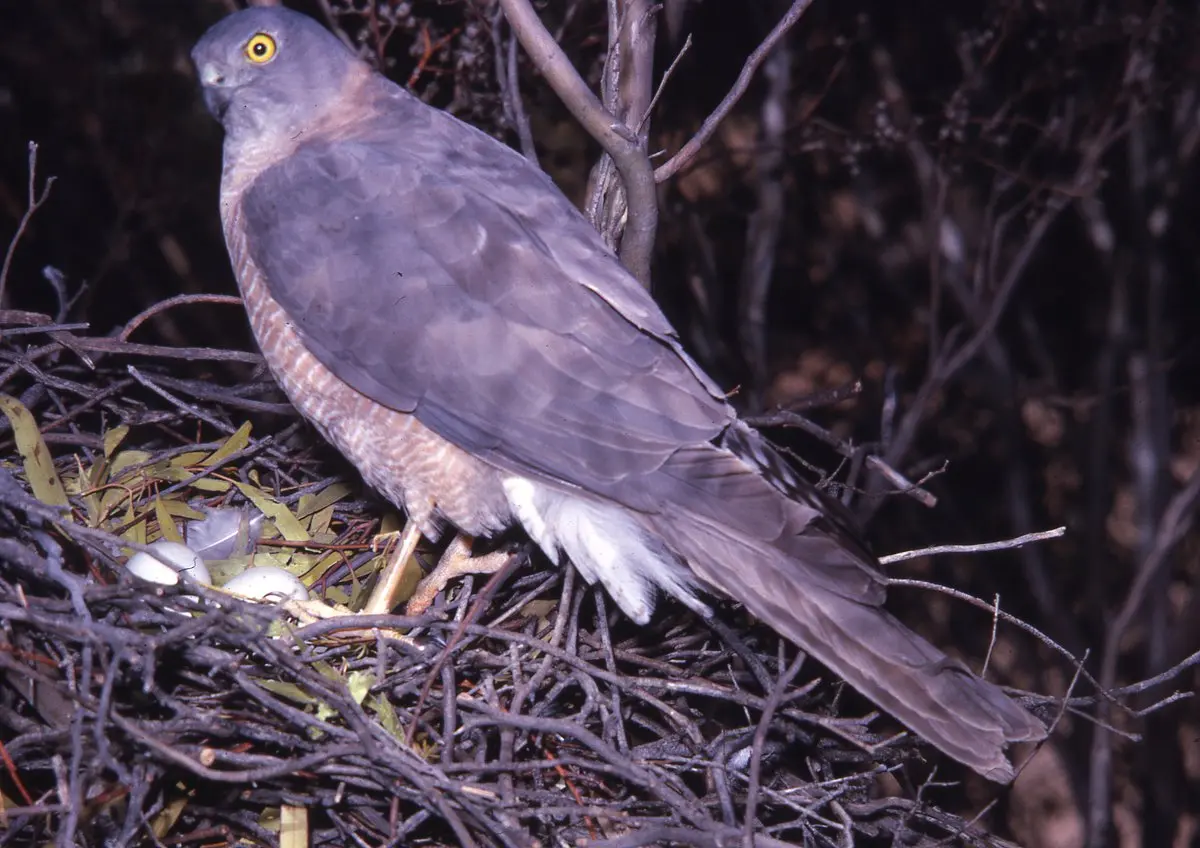
In Native American culture, sparrow hawks symbolize courage and resilience. They are considered messengers of strength, guiding individuals through hardships and serving as reminders of perseverance. The element of guidance echoes through various tribal myths, framing the sparrow hawk as a spiritual ally in times of struggle.
In Chinese culture, sparrow hawks are viewed as auspicious symbols of luck and prosperity. These birds are associated with wisdom, as their keen vision allows them to identify opportunities that might go unnoticed by others. The ability to navigate challenges and seize favorable moments positions sparrow hawks as protectors in the context of personal success.
According to Hindu beliefs, sparrow hawks signify spiritual power and knowledge. They represent the capacity to transcend worldly challenges, invoking forces of wisdom that guide individuals toward enlightenment. Their presence is often interpreted as a positive omen, heralding blessings and protection.
In Egyptian mythology, the sparrow hawk was linked with royalty and power, closely associated with divine protection from malevolent forces. This connection underlines the significance of sparrow hawks as guardians, reinforcing their symbolism as creatures that ensure balance and order in the universe.
Greek mythology also ascribes attributes of wisdom and strategy to the sparrow hawk, associating it with the goddess Athena. Sparrows represent clarity of vision and intelligent decision-making. Their fearless approach epitomizes a balanced and strategic mindset, encouraging individuals to confront challenges with insight.
Overall, the various cultural interpretations of the sparrow hawk showcase its multifaceted symbolism across multiple societies, embodying resilience, wisdom, guidance, and protection. The emotional connections forged between humans and these birds enrich the narratives of hope, drawing parallels between their instinctual strengths and the ongoing journey of life.
Symbolism in Different Cultures
The symbolism associated with sparrow hawks is diverse and reflects rich cultural values. Across different cultures, these birds resonate deeply, representing themes that capture human experiences and emotions.
| Culture | Symbolism |
|---|---|
| Native American | Strength, resilience, and guidance |
| Chinese | Good fortune, prosperity, and wisdom |
| Hindu | Spiritual power, enlightenment, and protection |
| Egyptian | Royalty, divine protection, and balance |
| Greek | Wisdom, strategy, and intelligent decision-making |
Each culture has imbued the sparrow hawk with inspirational themes that resonate with individuals facing challenges. The deep connection between the bird and various aspects of human life serves to enhance an appreciation for the natural world and our place within it.
Depictions in Literature and Art
The sparrow hawk’s presence in literature and art is marked with significance, often embodying traits that highlight its agility, precision, and role within nature. Literary representations of the sparrow hawk can range from metaphors of survival and adaptability to themes of freedom and instinct.
In poetry, sparrowhawks symbolize endurance and adaptability, serving as emblems of the relentless pursuit of existence. Their ability to navigate changing environments mirrors human struggles and triumphs, emphasizing the importance of resilience.
Artistically, the sparrow hawk has been widely depicted in various forms. From paintings to sculptures, artists capture the essence of this bird through vivid imagery. Creators frequently portray sparrowhawks in dynamic poses, showcasing their powerful wings and keen eyes, emphasizing their majesty and presence within nature.
These representations highlight the connection between sparrowhawks and the environment, serving as reminders of their role in maintaining ecological balance. The intersection of art and literature encapsulates the awe inspired by these remarkable birds and elevates their status as enduring symbols of nature’s beauty and complexity.
Interesting Facts About Sparrow Hawks
Sparrowhawks are not only captivating in their physical and behavioral characteristics but also loaded with intriguing facts that highlight their unique adaptations and ecological importance. Here are some interesting insights into this fascinating raptor:
- Agile Hunters: Sparrowhawks are capable of making extremely fast aerial maneuvers, reaching speeds of up to 50 mph during a dive. This remarkable agility allows them to catch quick-moving prey mid-flight.
- Urban Adaptation: These birds have adapted well to urban environments, utilizing city parks and gardens for hunting and nesting. This flexibility reflects their resilience and ability to coexist with human populations.
- Vocal Mimicry: Male sparrowhawks are known to mimic the calls of other birds, particularly during courtship displays. This vocal mimicry may play a role in attracting mates or establishing territory.
- Sexual Dimorphism: The significant difference in size between male and female sparrowhawks allows them to target different prey sizes and reduces competition for food resources.
- Partial Migration: While some populations of sparrowhawks are migratory, others remain sedentary throughout the year, indicating adaptability based on environmental conditions.
- Ecosystem Indicators: As apex predators, sparrowhawks help maintain the balance of bird populations in their ecosystems, serving as indicators of ecological health.
These fascinating adaptations and facts illustrate the unique role that sparrowhawks play within their habitats and their importance in maintaining ecological balance.
Unique Adaptations
The unique adaptations of sparrowhawks have evolved over time, allowing them to thrive as proficient hunters in various environments. These adaptations not only showcase their predatory skills but also highlight the intricate relationships they share with their ecosystems.
- Wing Structure: Their short, rounded wings enable rapid acceleration and maneuverability. This wing design facilitates quick turns and dives when pursuing prey through dense foliage, much like a precision instrument designed for high-speed, acute movements.
- Keen Vision: Sparrowhawks possess exceptional eyesight, allowing them to spot small birds from considerable distances. Their large, forward-facing eyes enable effective depth perception, critical for successfully calculating distance and speed during aerial pursuits.
- Hunting Techniques: Sparrowhawks employ a variety of ambush tactics. By utilizing cover, they can approach prey silently before launching sudden attacks. Their ability to adapt their hunting strategies based on available prey showcases their intelligence and agility.
- Camouflage: The varying plumage colors between males and females provide effective camouflage during the hunt, allowing them to blend seamlessly into their surroundings. This tactical advantage is essential for successful predation.
- Flexible Diet: Their dietary breadth allows sparrowhawks to adapt to changes in prey abundance. When avian populations are low, they can shift to alternative food sources, such as small mammals, showcasing their resilience in fluctuating environments.
- Nesting Behavior: Utilizing diverse nesting locations, sparrowhawks can select dense trees or urban structures that offer protection from predators. This adaptability in nesting sites demonstrates their ability to respond to environmental changes.
Overall, these unique adaptations position sparrowhawks as effective predators, emphasizing their critical role in maintaining the balance of bird populations within their habitats.
Record Sightings and Behaviors
The record of sightings and behaviors of sparrowhawks contributes valuable insights into their adaptability and the ecological contexts they thrive within. Research conducted by birdwatching organizations and ecological studies helps document patterns of behavior, migration, and population dynamics.
- Migration Patterns: Some populations of sparrowhawks are known to be migratory, particularly those from northern regions. Sightings in southern areas during winter months indicate strategic migrations for food availability, which mirrors broader avian migration patterns.
- Urban Adaptability: Increased sightings of sparrowhawks in urban settings highlight their adaptability. Numerous studies document breeding pairs successfully nesting in city parks and gardens, suggesting that urban habitats can provide sufficient food sources and shelter.
- Vocalizations: Observations of male sparrowhawks engaging in vocal mimicry during courtship contribute to our understanding of their social behaviors. These behaviors may enhance successful mating opportunities, reflecting the complexity of their communication strategies.
- Hunting Success Rates: Researchers have recorded hunting success rates, which typically hover around 10%. These data points highlight the challenges sparrowhawks face when capturing prey, underlining the need for swift adaptations in hunting tactics.
- Population Assessments: Ongoing surveys and counts conducted by conservation organizations provide valuable data on sparrowhawk populations. These assessments help track changes in breeding success and distribution, informing conservation strategies.
Through collaborative observation and record-keeping of sparrowhawk behaviors and population dynamics, we gain a deeper understanding of their ecological significance and the challenges they encounter in a rapidly changing environment.
In conclusion, sparrowhawks stand as remarkable examples of the intricate relationships between birds of prey and their ecosystems, showcasing the elegance and adaptations needed to thrive in diverse environments. As we explore the world of these captivating raptors, it becomes clear that their importance extends far beyond their role as apex predators; they contribute to the ecological balance and inspire cultural narratives that resonate across civilizations. Through ongoing conservation efforts and research, we can ensure the continued presence of these striking birds in our skies for generations to come.






